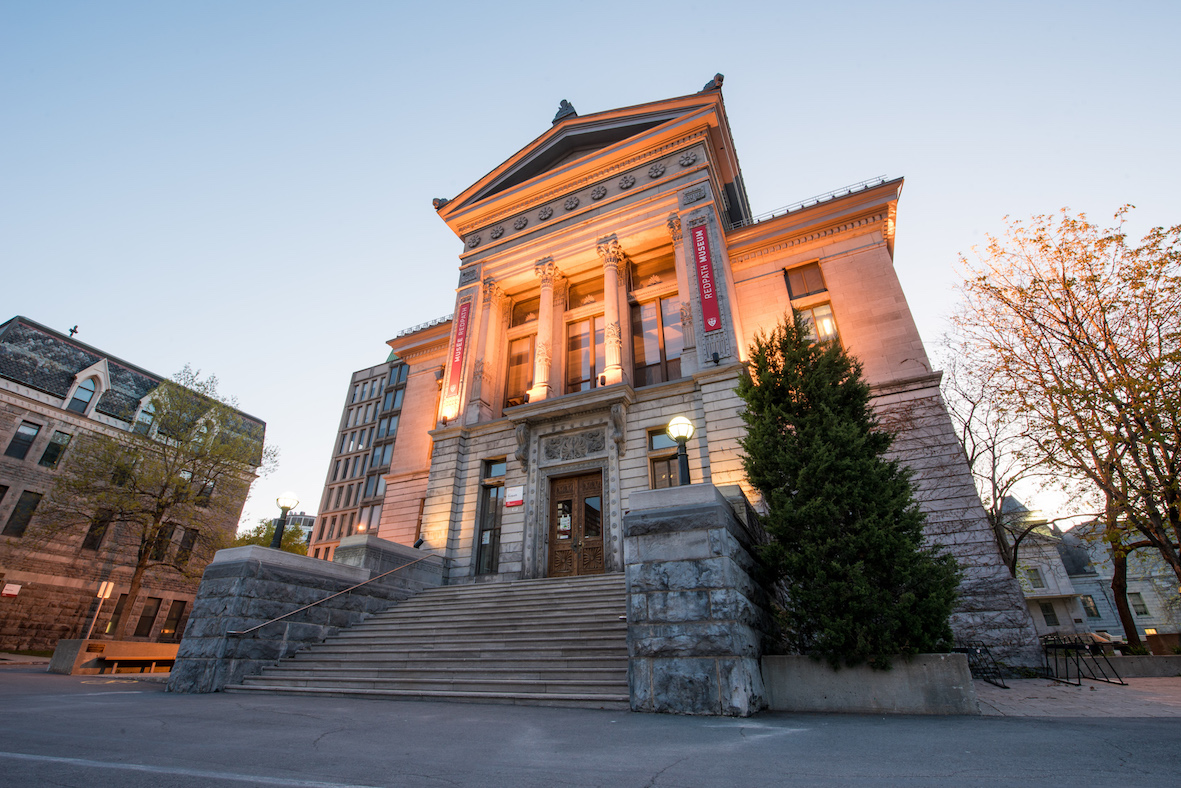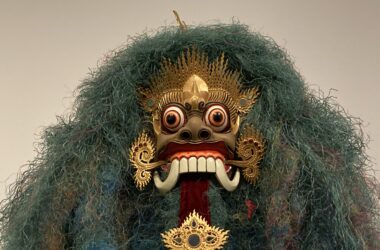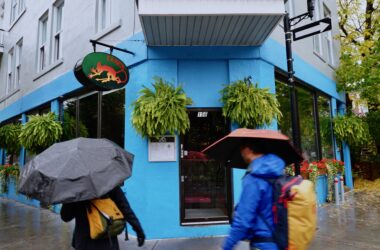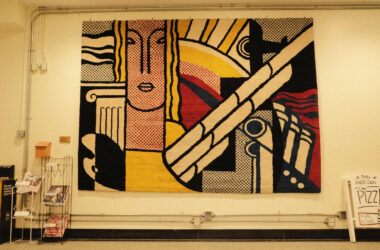In the past year, The British Museum and other European institutions have come under scrutiny for continuing to display artifacts that have been acquired through colonial violence and military intervention. In response to this global controversy, French President Emmanuel Macron commissioned a national report calling for the restitution of the artifacts to their place of origin. According to the report, written by French art historian Bénédicte Savoy and Senegalese academic Felwine Sarr, 90 to 95 per cent of Africa’s material cultural objects are held outside of Africa by major museums, validating Macron’s suggestion that European museums should no longer hold control over African heritage.
While the restitution of culturally-significant artifacts has become a media flashpoint among larger European museums, it is easy to ignore smaller institutions that perpetuate the same form of colonial appropriation of heritage objects, including McGill University’s own Redpath Museum.
The World Cultures Collections at the Redpath Museum features approximately 17,000 archaeological and ethnographic objects from a wide array of origins including Africa, the Middle East, Oceania, and South America. The collection includes over 2,500 objects from Africa, specifically Angola, Egypt, and the Congo which were collected circa 1900. Of the Redpath’s African collection, two thousand more objects originate from Egypt and the Redpath Museum currently holds and displays three human mummies, as well as other religious and decorative cultural items. While it is admirable that McGill is showcasing so many of these works, many of the artifacts, including the mummies, were acquired through theft or illegal trading.
In 2016, Barbara Lawson, who previously held the position of World Cultures curator at the Redpath Museum, published an article in Fontanus McGill discussing how McGill chancellor James Ferrier illegally obtained the mummies in 1859. Ferrier likely acquired the artifacts from Mustapha Agha Ayat, a well-known trader who was also a major figure in the illicit antiquities market.
Due to the dubious exchanges surrounding the acquisition of the mummy and other items, it is unlikely that Redpath Museum will ever determine the source of the mummies, making their potential return much more complex. Thomas Roddick donated one of the three mummies in 1895 after his travel to Egypt to participate in a colonial British military mission following his participation in the Anglo-Egyptian War of 1882. Similarly, the exact origin of the mummy is unknown.
Khalid Mustafa Medani, graduate program director and associate professor in the Department of Political Science and the Institute of Islamic Studies, explains that the way the museum displays its artifacts is unethical, and propagates an imperialist experience that advances the notion of Western superiority. In an interview with The McGill Tribune, Medani drew particular attention to the texts that accompany the mummy display.
“[Artifacts] are displayed out of context,” Medani said. “They are displayed in ways that diminish and devalue the people who made the artifacts, giving little historical context.”
On the third floor of the Redpath Museum, the descriptions accompanying the mummies vaguely cite how the works were sourced, presenting an incomplete and hazy history of the provenance of Redpath’s collected human remains.
“The mummy was brought to Montreal from Thebes in 1859 by James Ferrier,” one of the texts reads. “[It was] brought back from Egypt in 1859 and donated to Montreal Redpath Museum.”
Despite trying to clarify the artifact’s history, the text still leaves much unclear. The plaque does not detail Ferrier’s motivations for his trip, nor does it provide information about the illegal transactions that allowed him to take the mummy.
Medani also discussed Western curation practices, many of which reflect a belief that the West has the right to display culturally-significant objects from around the world.
“It is a philosophy that it’s Western museums and the Western world that can curate world art,” Medani said. “One of the trustees of the British Museum said very affirmatively ‘We are a world Museum for the world.’ [Western museum] understanding is that the epicenter, the most-elevated and advanced population, resides in the West and that [museum curators] have a legitimate right to curate art of the [entire] world.”
However, even if viewers take the initiative to look beyond exhibitions and search for artifacts’ contexts, obtaining such information is no easy feat. Annie Lussier, the current World Cultures curator at Redpath, described the process of finding more details about the origins of certain objects as extensive.
“Archives related to the collections are accessible to researchers only by request,” Lussier said, noting that researchers can only contact the Redpath Collection Manager, the Director of the Museum, or herself.
While research is possible, there are frequent barriers to accessing information, especially for the majority of Redpath visitors who do not have the necessary credentials to gain admission to the Museum’s archives.
“[The Redpath Museum] has a sensitivity to the ethical issues related to preservation, exhibition, and restitution of cultural heritage,” Lussier said.
According to Lussier, the Redpath Museum is currently working on updating their collection management policy, which will include a new section on restitution and will be available online. She also noted to improve cultural awareness, curators and historians should consult with relevant communities prior to the exhibition of objects.
“It’s a conversation we need to have as people from museums, but also with communities too, to find out what their needs are, and so listening is very important for us, especially listening to different voices,” Lussier said.
However, the Redpath Museum has not contacted any of the communities for which their displayed objects have cultural significance, nor do they have any concrete plans to do so.
Gloria Bell, an assistant professor of Indigenous Arts in the Department of Art History and Communication Studies at McGill, has visited the World Cultures exhibit in recent months, and believes there’s room for improvement.
“[The Redpath Museum] has a historicizing, outdated, primitivizing display [and employs] a very old school strategy,” Bell said in an interview with the Tribune.
Bell noted that the museum is understaffed and in dire need of more employees to begin the extensive process of reconstruction. Bell also discussed the possibility of the Redpath Museum asking contemporary artists to display their work in order to highlight up-to-date works rather than showcasing world cultures of the past.
Medani presented a variety of different solutions to remedy the issue of stolen objects: The immediate restitution of cultural objects, and the possibility of loans to African museums. The advantage of loans is that objects can be returned, and with less red tape.
“It is a temporary resolution, but it has already been happening in museums in Benin City and the Nigerian National Museum,” Medani said.
Medani also evoked the Benin Dialogue Group (BDG), which was established in 2007 to address restitution claims, as a possible solution to loan objects. The BDG is a consortium of representatives from a handful of European museums, the Royal Court of Benin, Edo State Government, and Nigeria’s National Commission for Museums and Monuments.
“That is a way to curate these exhibits in a joint-fashion, where you have the full participation of curators of African museums,” Medani said. “I believe that this is a first step.”
Medani cited Savy and Sarr’s pivotal report when discussing the spiritual-cultural implications of keeping heritage objects in Europe and North America for African youth.
“The report said that this issue led to the spiritual impoverishment of Africans themselves, alienating them from their own culture and history,” said Medani. “African actors are emphasizing a very important note: It is crucial that a continent where 60 per cent of the population is under 20 to have the opportunity to have their own history exhibited and to own the exhibit.”
Engaging communities in the exhibition of their cultural artifacts is pivotal for the Redpath Museum going forward.
“These are arguments that Africans have been making for a long time,” Medani said. “Now, they are gaining traction because there is a global consciousness that this issue is important.”







